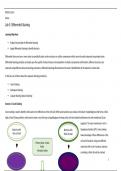Exam (elaborations)
BIOS242 Lab 5 Differential Staining complete 2024
- Course
- Institution
BIOS242 Lab 5 Differential Staining complete 2024 BIOS242 Lab 5 Differential Staining complete 2024 BIOS242 Lab 5 Differential Staining complete 2024
[Show more]



